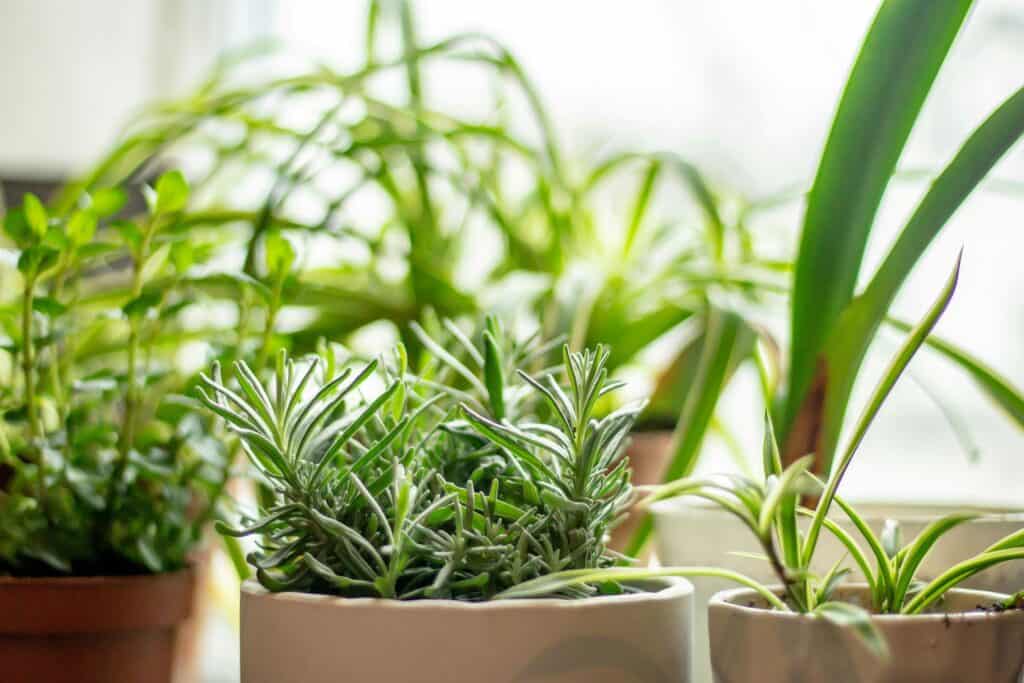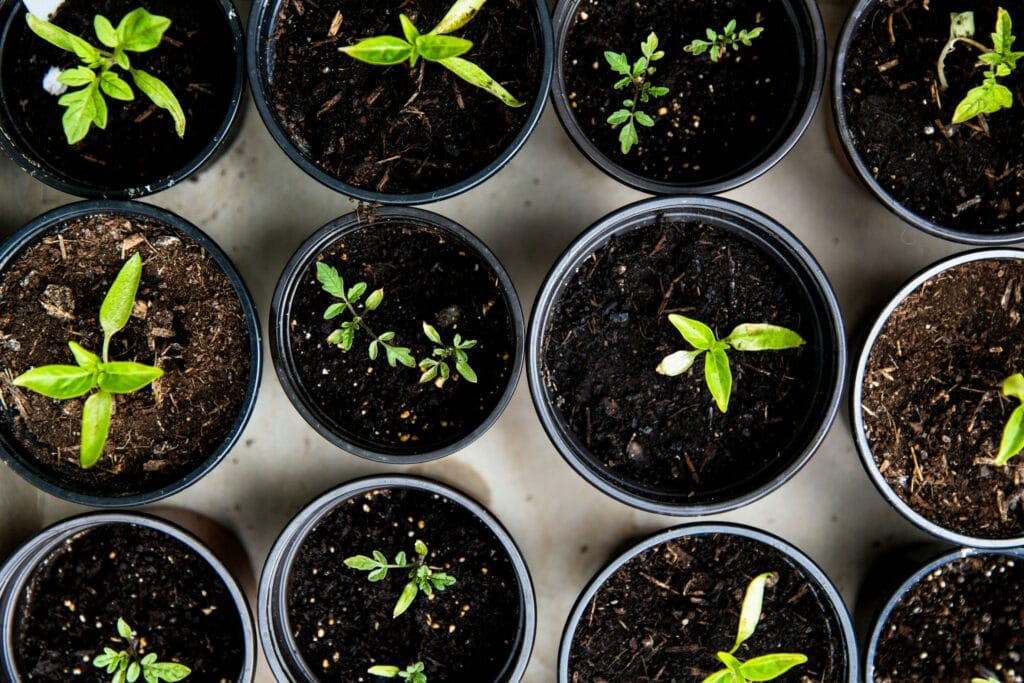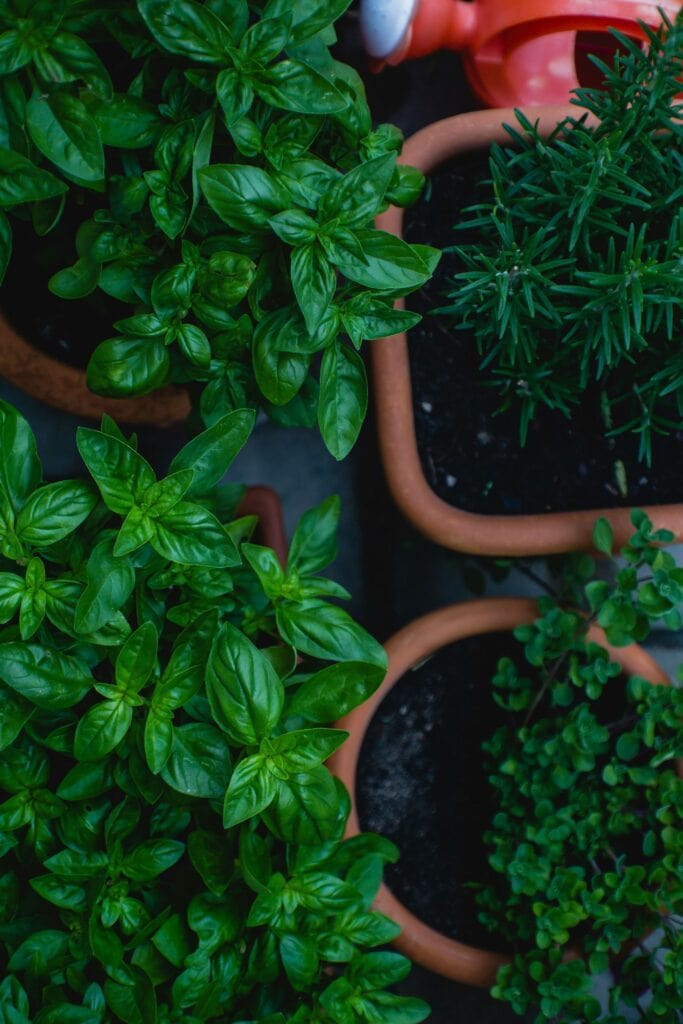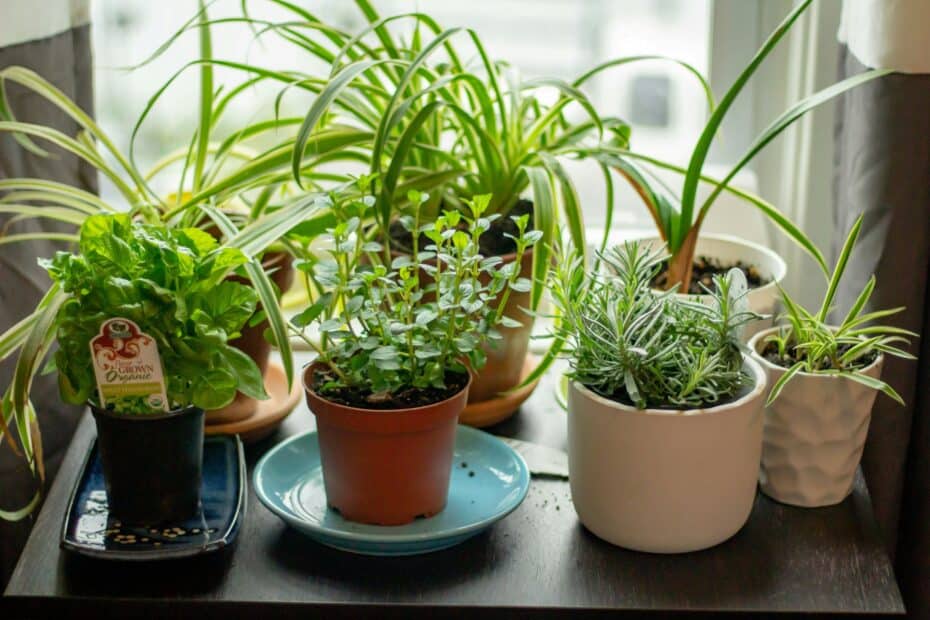A Beginner’s Guide to Growing Your Own Herbs: Home Gardening Tips
Growing your own herbs can be a rewarding and practical endeavor, adding beauty to your living space and enhancing your culinary skills. Herbs not only provide a diverse array of leaf textures, shapes, and scents for garden beds, but can also be easily grown indoors for continuous production 1. This beginner’s guide aims to give you the essential knowledge needed to embark on your herb gardening journey, covering key aspects like choosing the right plants for your space, caring for them, and harvesting.
Starting with a fundamental understanding of herbs, these aromatic plants have various uses, spanning from fragrances and culinary value to medicinal purposes 1. As a budding gardener, it can be helpful to know the types of herbs available such as annuals that complete their life cycle within one growing season, biennials that flower in the second year before dying back, and perennials that live more than two years 1. Many herbs, such as rosemary, may need to be replanted in colder climates as they are not frost-tolerant.
Herbs are often considered the ideal plants for beginners due to their relatively easy care and versatility in the garden 2. By following this guide and dedicating time to nurturing your plants, you’ll be well on your way to growing a flourishing and practical herb garden that caters to both your gastronomic and aesthetic tastes.
Choosing Your Herbs
When starting your herb garden, it’s essential to select herbs that you’ll enjoy using in your culinary adventures or for their therapeutic properties. Some popular herbs to grow include basil, rosemary, oregano, mint, thyme, parsley, cilantro, chives, sage, lavender, dill, lemon balm, and peppermint.
Basil is an easy-to-grow herb favored for its aromatic leaves, commonly used in Italian cuisine. Rosemary is a hardy perennial herb with a distinctive scent and needle-like leaves. It pairs well with roasted vegetables and meats. Oregano is another Mediterranean staple with a robust flavor, used in sauces, soups, and stews.
Mint encompasses a wide variety of species, such as peppermint and spearmint, known for their refreshing scent and taste, making them popular choices for teas and desserts. Thyme is a versatile herb with tiny leaves that pack a punch, used in various dishes for its subtle, earthy flavor. Parsley is a familiar herb used for garnishing and adding freshness to meals.
Cilantro has a unique, citrusy flavor and is often used in Mexican and Asian dishes. Chives provide a mild onion flavor and are perfect for sprinkling over savory dishes. Sage is a strong, slightly bitter herb used in small amounts to flavor meat and poultry. Lavender, besides its beautiful blooms, is appreciated for its calming scent and can be used in culinary applications, such as baked goods and teas.
Dill has a bright, robust aroma and feathery leaves, making it perfect for pickling and in salads. Lemon balm is a charming herb with a lemony fragrance and delicate leaves, often used in teas and salads. Peppermint is a popular choice for its cooling, invigorating flavor, used in everything from teas to minty desserts.
Selecting the right herbs for your garden depends on your tastes, cooking preferences, and the growing conditions in your area. With a myriad of flavors and a variety of types available, growing your own herbs can be a fulfilling, aromatic, and delicious endeavor.

Understanding Basic Requirements
Growing your own herbs requires a basic understanding of their needs. Herbs thrive when provided with the right combination of seeds, light, water, soil, space, sunlight, temperature and humidity.
Start by selecting high-quality seeds from a reputable source, as this will ensure the plants grow healthy and strong. Provide your herbs with adequate light, as they typically need at least 6-8 hours of sunlight per day. Place them near a sunny windowsill or use grow lights if natural sunlight is insufficient.
Watering is essential, but it’s important not to overwater your herbs. Allow the soil to dry out slightly between waterings, as this will prevent root rot and other fungal issues. The type of soil you choose plays a crucial role in the overall health of your herbs. It should be well-draining and nutrient-rich to support their growth. The six types of soil can greatly influence the success of your herb garden, so choose wisely based on your herbs’ specific requirements.
Space is another factor to consider when growing herbs. Ensure you provide enough room for them to grow and spread, as overcrowded plants can become stressed and more susceptible to diseases. The size of the container you choose for growing your herbs also affects the overall success of your plants.
Temperature and humidity play a significant role in herb growth. Most herbs prefer a temperature range between 60-70°F (15-21°C) and a relative humidity of 40-50%. There may be some variation depending on the specific herb, so it’s important to research the individual needs of each plant in your garden.
By understanding the basic requirements for growing herbs, you can create a thriving, healthy herb garden that enriches your home and your meals.
Starting From Seed vs. Buying Plants

Seeds
Starting your own herbs from seeds can be a rewarding experience. It offers a wider variety of cultivars to choose from and can be more cost-effective compared to buying plants from a nursery or grocery store. It also allows you to have more control over your garden plan, as you can decide which herbs to grow and in what quantities. Seed starting is an excellent choice for beginner gardeners who want to explore the world of gardening and learn about various herb varieties. You can learn more about seed starting in this Beginners Guide.
To successfully grow herbs from seeds, make sure you invest in high-quality seeds, use the appropriate organic potting soil, provide adequate water, and ensure there’s sufficient light for growth. As you gain experience, your germination rate and success with different herb varieties should increase.
Buying Plants
Another option for starting your herb garden is to purchase starter plants from a nursery or your local grocery store. This approach has its benefits, particularly for those who are new to gardening or have limited time to invest in seed starting. Buying plants allows you to skip the germination phase, providing you with mature, garden-ready plants that require less effort to grow. This can be especially helpful for long season herbs like tomatoes, peppers, and melons, as they will fruit more quickly when grown from mature plants.
However, buying plants can be more expensive than starting from seeds, and selection at a grocery store may be limited compared to the range of seeds available. Additionally, you may not have as much control over the growth conditions, such as the type of soil or fertilizers, as you would when starting from seed.
In conclusion, both options have their merits for beginners. Carefully consider your specific needs, goals, and gardening experience when deciding whether to start your herb garden from seeds or buy established plants.
Location and Setup
Selecting the appropriate location and setup for your herb garden is essential for success. Whether you choose to grow your herbs indoors or outdoors, consider factors such as sunlight, space, and temperature.
Most herbs require ample sunlight to thrive, so choose a spot with at least 8 hours of direct sunlight daily. Position your garden near a sunny windowsill if growing indoors. Alternatively, select an outdoor area with full sun exposure and minimal shade from trees or other structures.
Herbs can be grown in containers or directly in the ground, depending on your available space. Those with limited space may opt for container gardening, making it easier to move the plants and control their environment. For outdoor gardens, consider using raised beds to improve drainage and facilitate maintenance.
There are two primary categories of herbs: annuals and perennials. Annual herbs, such as basil and cilantro, need to be replanted each year, while perennials, such as thyme and sage, return on their own. Be sure to select herbs that fit your climate and gardening preferences. Consult growing guides for specific information on planting and caring for each herb variety.
When preparing your garden, use high-quality potting soil rich in organic matter for both container and in-ground gardens. This will provide your herbs with the essential nutrients they need to grow healthy and strong. Additionally, regularly water and prune your plants to keep them productive and pest-free. By considering location, sunlight, and herb types, beginner gardeners can establish a flourishing herb garden that provides fresh, flavorful seasonings for years to come.

Caring for Your Herbs
Herbs are a fantastic addition to any garden or kitchen, and with a little care and attention, they can thrive and improve the flavor of your meals. In this section, we will discuss the aspects of caring for your herbs, including watering, sunlight and temperature, and soil and fertilizer.
Watering
Proper watering is essential for healthy herb growth. Most herbs prefer a consistent supply of water, but it is crucial not to overwater them. It is generally recommended to water your herbs once the top inch of soil feels dry to touch. Some herbs, like basil and parsley, need more frequent watering, while others, like rosemary and thyme, can tolerate drier conditions. Make sure to keep an eye on the moisture level of your herbs’ soil and adjust watering as needed.
Sunlight and Temperature
For most herbs, bright and direct sunlight is a must. Herbs need 6-8 hours of sunlight per day to grow well. Position your herbs in a sunny spot, either outdoors or on a windowsill indoors.
Temperature is also important: while most herbs can tolerate a range of temperatures, they generally prefer warm conditions. Keep indoor herbs away from drafts or extreme temperature fluctuations, and ensure that outdoor herbs have proper air circulation to avoid issues with moisture and mildew.
Soil and Fertilizer
Herbs prefer well-drained, fertile soil, so choose a high-quality potting mix for your herbs. Drainage can be improved by adding perlite or coarse sand to the potting mix if necessary.
Fertilizer is essential for stimulating growth and maintaining healthy plant development. However, it’s important not to over-fertilize, as this can lead to excessive growth, diminishing the herbs’ flavors. It’s best to use a slow-release, all-purpose fertilizer when planting your herbs, or consider using an organic option like compost or mulched leaves.
By ensuring proper watering, sunlight and temperature conditions, and providing nutritious soil and fertilizer, you’ll be well on your way to having a thriving herb garden. Happy growing!
Common Pests and Diseases
Growing your own herbs can be a rewarding experience, but it is crucial to be aware of the common pests and diseases that might affect your plants. By understanding these issues, you can take the necessary steps to prevent or treat them, ensuring the health of your herbs.
Aphids are small insects that can cause significant damage to herbs by sucking the sap from plant tissue. They are most commonly found among crowded and rapidly growing herbs. To combat aphids, consider using horticultural soaps or neem oil as treatment options.
Spider mites are another common pest that prefers hot, dry conditions. These microscopic creatures often gather on the underside of herb leaves, causing a stippled appearance. Like aphids, horticultural soaps and neem oil can be effective in controlling spider mite infestations.
Japanese beetles can be a problematic pest as they feed on basil leaves. Handpicking adults or tapping infested leaves over a container of soapy water can remove them, and the beetles will fall in and drown. Avoid using baited traps as they tend to attract more beetles and increase damage.
Maintaining proper care of your herbs will also help prevent diseases. Overwatering, for example, can lead to root rot, while inadequate sunlight can result in mildew or fungal infections. Be sure to provide your herbs with the appropriate growing conditions to reduce the risk of disease.
In conclusion, knowing the common pests and diseases that may affect your herbs and taking preventative measures will significantly improve the overall health and success of your herb garden. Stay vigilant, and your herbs will thrive.
Harvesting and Usage
Harvesting your own fresh herbs can greatly enhance the taste of many dishes when used properly. When it comes to picking the right time to harvest, consider the state of your herbs and the dish you plan to create. Generally, herbs are most flavorful when gathered just before they begin to flower, as the plant’s essential oils are most concentrated at this stage.
To ensure the best taste in your salads, soups, and stews, always harvest the herbs in the morning after the dew has dried, as this is when the flavors are most potent. When cutting, use a sharp knife or scissors to remove the desired portions without damaging the plant. As a rule of thumb, never harvest more than 75% of a plant’s growth at one time to ensure it continues to flourish.
Fresh herbs also contribute to various other dishes, such as pesto, which gains a burst of flavor from ingredients like basil and parsley. To make the most of your freshly harvested herbs, try incorporating them into different recipes that benefit from their unique tastes and fragrances.
If you plan to store your freshly harvested herbs, there are a few methods you can employ. Drying is a popular choice for herbs like rosemary, thyme, and oregano, as it allows them to retain most of their flavor over time. Alternatively, you can also freeze herbs for convenient future use in various dishes.
Just like with onions, harvesting herbs the proper way can help increase their storage life and flavor potential. By making the most of your fresh herbs, you can enhance the taste and aroma of your favorite recipes, adding a gourmet touch to your home-cooked meals.
Health and Nutritional Benefits
Growing your own herbs can offer numerous health and nutritional benefits, as they provide essential vitamins, minerals, and antioxidants. Many herbs are packed with nutrients that can contribute to overall wellness and improved health. Moreover, freshly grown herbs often contain higher concentrations of these beneficial compounds compared to store-bought options.
Herbs are known for their antioxidants properties, which protect the body from damage caused by free radicals. Including fresh herbs in your meals can help fend off various diseases and boost immunity. For instance, basil contains powerful antioxidants, such as linalool and eugenol, with potential anti-inflammatory and cancer-fighting effects.
In addition to antioxidants, herbs are a rich source of various essential vitamins and minerals. For example, parsley is high in vitamin C and iron, while mint contains ample amounts of vitamin A and potassium. Incorporating these herbs in dishes can significantly enhance their nutritional value, supporting a balanced and healthy diet.
Another advantage of consuming home-grown herbs is that they can act as natural flavor enhancers, reducing the need for added salt or sugar. By substituting herbs for sodium and sugar in recipes, individuals can decrease their intake of harmful substances. This dietary change can result in benefits such as lower blood pressure and reduced risk of heart disease.
In conclusion, cultivating and consuming fresh herbs can improve one’s health and nutritional intake in numerous ways. From supplying essential nutrients to providing antioxidants, herbs can play a valuable role in promoting overall wellness while elevating the flavor and quality of meals.
Beyond Basics: Expansion and Optimization
Once you have gained some experience and confidence in growing your own herbs, it’s time to explore more advanced techniques to optimize your herb garden’s success and potentially expand your gardening to include vegetables. By applying principles such as companion planting, crop rotation, and indoor growing, you can improve your garden’s yield and overall health.
Companion planting refers to the practice of strategically planting different herbs and vegetables together to benefit from their natural relationships. For example, some plants might naturally repel pests that would otherwise damage their neighbors, while others may help improve the soil quality for the plants they share space with. An example is growing basil alongside tomatoes, as basil helps to repel insects that are problematic for tomato plants.
Crop rotation is another technique that often used in larger-scale gardening and farming. It beneficial in smaller herb gardens as well. This practice helps prevent the depletion of nutrients in the soil by regularly changing the types of plants grown in specific areas. For example, alternating between nitrogen-fixing plants and those that consume nitrogen can help maintain a healthy balance of nutrients in the soil.
Growing herbs indoors is also a possibility, particularly for those with limited outdoor space or opportunities. Many herbs are well-suited to indoor growth and adapting different growing methods, such as hydroponics or using LED grow lights, can benefit indoor herb gardens. Not only does growing herbs indoors allow you to extend the growing season, but it can also help you avoid some of the challenges posed by outdoor pests and weather conditions.
Incorporating vegetables into your herb garden is a natural next step once you feel confident in your abilities. Many vegetables can be grown using similar techniques to those employed with herbs, and they can also benefit from companion planting. For example, growing lettuce near herbs such as mint and chives can help ward off pests that attack lettuce plants.
A Beginner’s Guide to Growing Your Own Herbs FAQs
What are the easiest herbs for beginners to grow?
Some of the easiest herbs for beginners to grow include basil, cilantro, parsley, and mint. These herbs are relatively low-maintenance and can adapt well to a variety of growing conditions.
How can I grow herbs from seeds?
To grow herbs from seeds, start by choosing high-quality seeds. Fill a small container or seed tray with organic potting soil, and plant the seeds according to the instructions on the packet. Keep the soil consistently moist and provide plenty of sunlight. Once the seedlings have grown a few sets of leaves, you can transplant them to their final growing location.
Which herbs work best for indoor container gardening?
Herbs well-suited for indoor container gardening include basil, chives, oregano, and thyme. These herbs can thrive in containers and can adapt to the limited sunlight and space available in an indoor setting.
What is a basic layout for a herb garden?
A basic layout for a herb garden could consist of a rectangular or square plot with herbs planted in rows or grouped by type. To make the most of your space, plant taller herbs like dill, cilantro, and parsley in one section, while keeping shorter herbs like thyme, oregano, and chives together in another. Ensure your garden receives at least 8 hours of sunlight daily and has proper drainage.
Which herbs should not be planted together?
Some herbs, like dill and cilantro, have strong flavors and may compete for nutrients if planted too closely. Others, such as mint, can be invasive and should be planted in separate pots to prevent them from overtaking the entire garden. Keep these factors in mind when deciding on plant arrangements.
What are some creative herb garden ideas?
Creative herb garden ideas include using hanging planters, vertical garden walls, or repurposed containers to save space and add visual interest. You can also incorporate herbs into your landscape by planting them in flower borders or along walkways, creating a practical and beautiful garden design.
